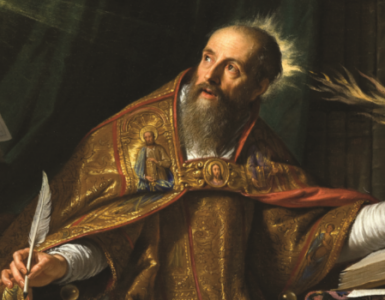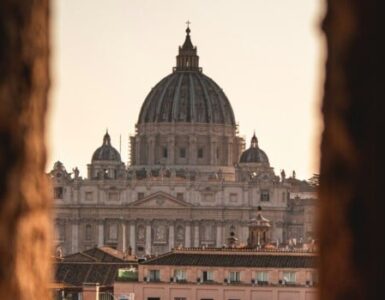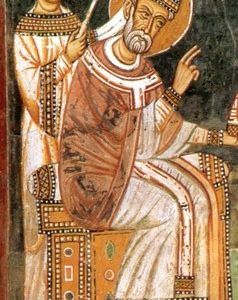This series of articles intends to remind the Catholic faithful that pilgrimages aren’t only trips taken to well-known religious destinations, like the Holy Land, or the great cities of Western civilization, like Rome or Paris. A pilgrimage is a journey taken to facilitate a deeper connection with the Lord, which can happen anywhere, really. There are lots of cities from sea to shining sea that have the potential for making great pilgrimage destinations.
Memphis, Tennessee is another one of those cities. The Metropolis on the American Nile is perhaps best known as the longtime home of Elvis Presley; as the site of St. Jude Children’s Research Hospital; and as the site of the world headquarters for corporations such as FedEx and AutoZone. Beyond those highlights, Memphis is home to world-class barbecue and blues music, and the city boasts a deep connection to the Civil Rights Movement of the 1960s. Pilgrims are sure to see that Memphis makes a great place to visit for fascinating history lessons and fantastic Southern food, not to mention a richer encounter with Jesus Christ.
A city’s cathedral makes a great place to begin any pilgrimage, as it reminds us to keep Our Lord and the Church He established forefront in our lives and travels. Memphis’s Cathedral of the Immaculate Conception, situated in scenic midtown, has stood in the same spot since the 1930s. The exterior of the building is in the Spanish colonial revival style, and its interior is a classical basilica form. Inside, the focal point is a reproduction of Bartolome Murillo’s The Assumption of the Virgin, which fills the cathedral apse. The nave also exhibits mosaics of the Latin Church Fathers and quotes from Scripture.
Not far from the cathedral is the Memphis Brooks Museum of Art. Pilgrims will be fascinated by the presence of an original Bouguereau, At the Foot of the Cliff (1886), but the highlight of this museum for Christians is Carl Gutherz’s Light of the Incarnation. Painted in 1888, this image depicts the choirs of angels rejoicing in Heaven at the moment Jesus was born in Bethlehem. The way that the artist captures that moment provides pilgrims with an opportunity to reflect on the fact that God’s plan, present throughout all of human history, has been fulfilled by the Word becoming flesh.
Another wonderful piece of art that hangs in the Brooks Museum is Henry Ossawa Tanner’s The Thankful Poor (on display only through February 2023). Tanner is frequently better known for his depiction of religious scenes, but this piece makes two important connections. First, it connects incredibly well to Memphis’s history of sharecropping and cotton commerce. Second, it provides a reminder that everything is a gift of God’s grace, no matter how much or how little we have materially.
Sometime during this journey, a pilgrim might have a moment to make a trek to the suburbs for a visit to the Shrine of St. Faustina of the Divine Mercy. Established in 2011, the shrine has two first-class relics of St. Faustina, and hosts a daily holy hour of mercy at 3:00pm, where the Chaplet and Rosary are prayed for God to pour out His Divine Mercy on the world. Most importantly, the shrine community connects over 6000 people around the globe in perpetual prayer, which our world desperately needs.
Every visitor also needs to catch a glimpse of Memphis’s important place in the Civil Rights Movement of the 1960s and beyond. The historic Lorraine Motel, where Martin Luther King, Jr., was assassinated in 1968, houses the National Civil Rights Museum. This fantastic presentation of local and national civil rights history is simply one of the best museums any traveler ever could visit. Beyond the quality of the museum, pilgrims have the opportunity to pray for social justice and racial reconciliation. At certain points in the museum’s exhibits, pilgrims are also reminded that Catholic clergy and consecrated brothers and sisters were frequently leaders in marches and protests. In these moments, pilgrims can remember their own baptismal call to treat every human life with dignity and respect.
Another interesting site that helps to make the connection between the Catholic faith and the Civil Rights Movement is the burial site of Servant of God Sr. Thea Bowman, in Historic Elmwood Cemetery. Sr. Thea’s cause for canonization was opened by the U.S. bishops in 2018. Born in Yazoo, Mississippi and baptized as a Catholic at nine years old, Sr. Thea left her own deep and lasting impression on the Church’s work for racial and social justice, especially among descendants of slaves in rural Mississippi. She makes a great intercessor for the intention of bringing true and lasting peace into our social fabric.
Also in downtown Memphis, is the National Shrine of St. Martin de Porres, operated by the Southern Province of the Order of Preachers (the Dominicans). St. Martin de Porres was born in Lima, Peru, as a poor mulatto child, meaning his father was a Spaniard nobleman and his mother was a slave. Because of his ancestry, he was denied full access to social opportunities such as formal education. At age 15, he entered the Dominican priory as a lay brother engaging in menial tasks. That is why he is always depicted holding a broom with mice around his feet. This shrine, offering Mass at noon on weekdays, is another opportunity to remind pilgrims to work diligently to protect and foster human dignity.
Right next door to the shrine (which is connected to St. Peter’s parish church) is the Magevney House. This house was the home of Memphis’s first Catholic schoolteacher and the site of the first Catholic Mass, Marriage, and Baptism in the region. Unfortunately, the house is now closed to the public because of limited staffing issues; but the chest of drawers that served as the altar for the first Mass is visible at the diocesan chancery. Standing outside the small, white clapboard structure allows a moment for prayer: “Lord, shed your grace on the laity of your Church who seek to work hard to build your Kingdom on earth, and who seek to pass on the faith to the next generation.”
To conclude every great pilgrimage, visitors ought to immerse themselves in the local food and music culture. Historic Beale Street, where one can experience authentic local blues music every afternoon, is just a few blocks from the Magevney House. From there, dining at one of the nearby world-famous barbecue joints is simply a must. (There are dozens to choose from, but Rendezvous, Central BBQ, or Neely’s Interstate BBQ are some of the best.) After dinner, visit Tom Lee Park, which sits on the banks of the Mississippi River and also marks the site of Fort Assumption, where French settlers brought the Catholic faith into the region in the 1740s. Finally, gaze across Old Man River and take in a breathtaking sunset, giving thanks for the blessings God has poured into your own life by His Providence.
✠












